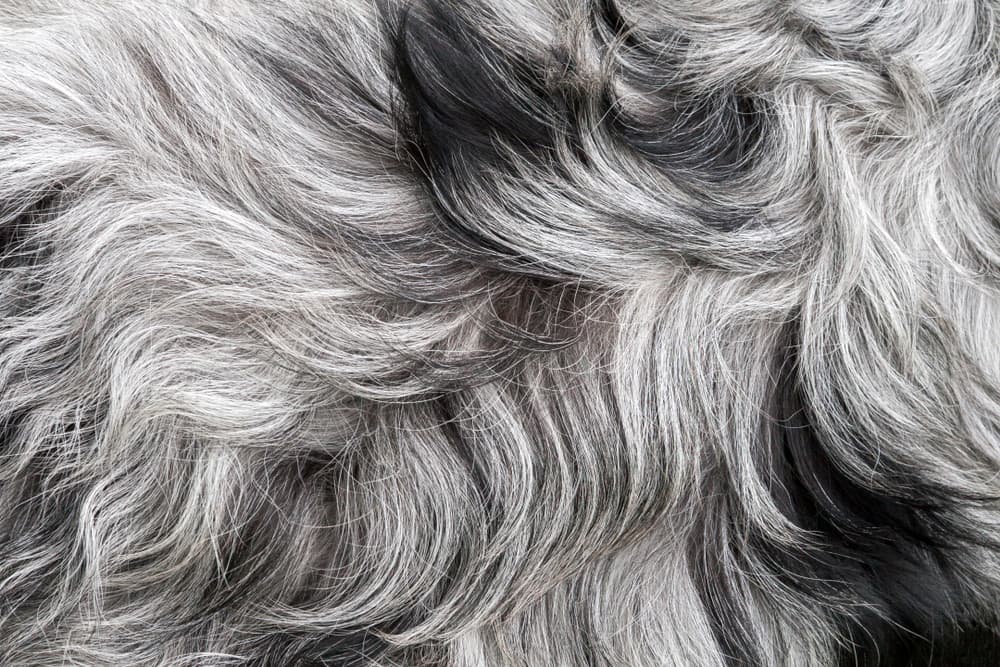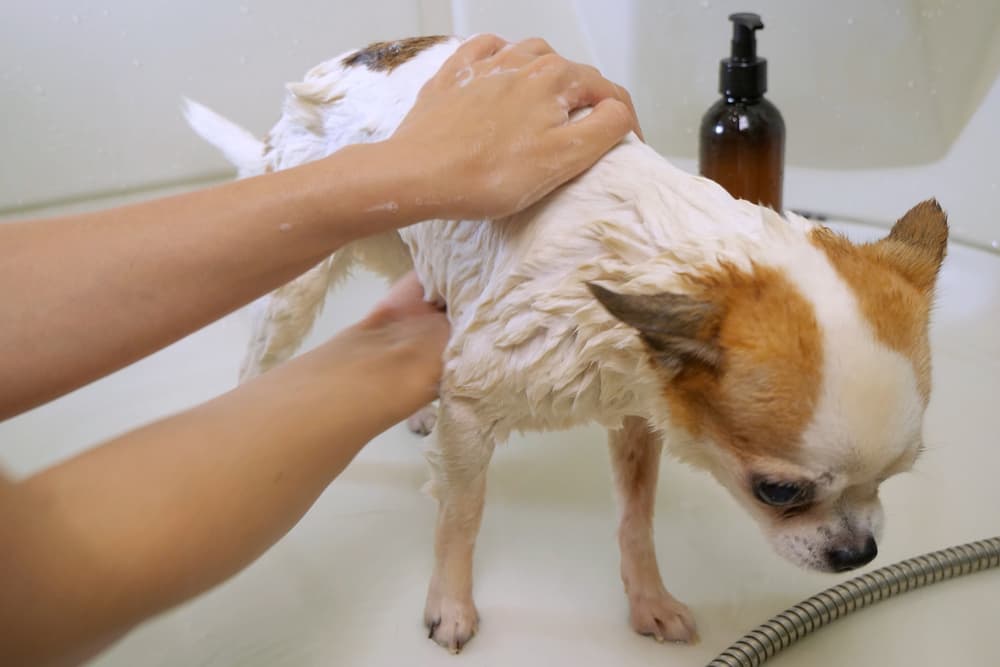Folliculitis in Dogs

Overview
Folliculitis is a common skin condition in dogs that is often the result of a bacterial infection. This bacterial infection may be caused by skin allergies, flea allergies, or hormonal diseases including Cushing’s disease and hypothyroidism. Symptoms of folliculitis in dogs include itching, redness, swelling, bumps on the skin, and round areas of hair loss. Treatment typically involves a combination of antibiotics and medicated shampoo.
As one of the most common canine skin conditions, folliculitis will impact many dogs at some point during their lives. Fortunately, this condition is often relatively easy to treat, with veterinary attention.
However, many cases of folliculitis in dogs are prone to recur, until you figure out the underlying factors that are causing this condition.
What Is Folliculitis in Dogs?

Folliculitis refers to inflammation within a dog’s hair follicles. There are a number of different factors that can cause folliculitis, though the most common cause is a bacterial infection. In many cases, the term bacterial folliculitis is used interchangeably with skin infection when describing a dog’s skin condition.
Causes of Folliculitis in Dogs

A significant majority of folliculitis cases are associated with a bacterial infection in dogs. Every dog has a normal population of bacteria that lives on the surface of the skin. In most dogs, these normal skin bacteria do not cause any problems or signs of disease. In some dogs, however, the normal skin bacteria proliferate out of control, causing infection and inflammation within the hair follicles and in the other layers of the skin. This results in folliculitis.
The most common cause of folliculitis is underlying skin allergies. Dogs may be allergic to inhaled environmental allergens, food ingredients, or fleas. Any of these allergies can make a dog more likely to develop bacterial folliculitis. Endocrine (hormonal) diseases such as Cushing’s disease and hypothyroidism can also predispose a dog to folliculitis, as can immune disorders.
Some cases of folliculitis in dogs are localized, affecting only a single small portion of the skin. Localized folliculitis may be caused by self-trauma, ingrown hair, pressure calluses, or other local factors that predispose that region to skin infections. Callus infections, interdigital cysts (swellings that occur between the toes), and chin acne are all common types of localized folliculitis that may be seen in dogs.
While most cases of folliculitis are caused by bacterial infection, non-bacterial folliculitis can occur. The two most common causes of non-bacterial folliculitis are fungal infections and skin mites. Ringworm (a fungal infection) infects the hair follicle, causing folliculitis and hair loss. Demodex mites (a type of mange) also infect the hair follicle, causing folliculitis and hair loss.
Symptoms of Folliculitis in Dogs

When the hair follicle is inflamed, a variety of visible changes may occur in the skin. You may see signs of inflammation, such as itching, redness, and swelling. Pustules on dogs can also be a common sign of folliculitis. Additionally, inflammation of the hair follicle often results in hair loss.
Signs of folliculitis in dogs may include:
- Itching
- Redness
- Swelling
- Hair loss
- Papules (raised red bumps on the skin)
- Pustules (pus-filled bumps, like pimples)
- Hyperpigmentation (dark skin discoloration caused by chronic inflammation)
- Epidermal collarettes (round areas of hair loss with peeling skin)
- Scabs and abrasions
Some dogs may show very pronounced signs of skin inflammation, while other dogs may have more mild signs. Skin changes associated with folliculitis may affect the entire body or they may be localized to a single region, depending on the cause of your dog’s folliculitis.
Diagnosing Dog Folliculitis

Folliculitis requires a veterinary visit in order to arrive at a diagnosis. Your veterinarian will first perform a physical examination, evaluating your dog’s overall health and paying careful attention to your dog’s skin. Your veterinarian will look for lesions consistent with folliculitis, while also looking for signs of fleas or other possible causes of folliculitis.
A skin scrape will be used to rule out skin mites, while a fungal culture and/or Wood’s lamp examination will be used to rule out ringworm. Your veterinarian may also recommend a skin biopsy, to exclude other types of skin disease.
Once your veterinarian has determined that your dog has bacterial folliculitis, additional tests may be recommended to confirm the diagnosis and further characterize your dog’s infection. Your veterinarian may perform a skin cytology, in which a sample of debris from the skin’s surface is collected and examined under a microscope. A skin cytology allows your veterinarian to look for bacteria and yeast on the skin’s surface. Your veterinarian may also recommend a bacterial culture and sensitivity, to determine which bacteria are causing your dog’s folliculitis and which antibiotic will be most effective against those bacteria.
In cases of recurrent or chronic folliculitis, your veterinarian may recommend testing to determine the underlying cause of your dog’s skin condition. These tests may include blood tests, urinalysis, and allergy testing.
Dog Folliculitis Treatment

Treating bacterial folliculitis typically requires a combination of systemic and topical medications. Systemic (whole body) antibiotics are a mainstay of treatment, helping to eliminate bacterial infections deep within the skin. These antibiotics are usually given orally although, in some cases, a long-acting injection may be recommended. Medicated shampoo is often prescribed as an aid to systemic antibiotic therapy. These treatments are continued for at least three weeks, with some dogs requiring several months of therapy to eliminate their infection.
Your veterinarian will likely schedule an appointment to recheck your dog’s skin after two to three weeks of treatment, to assess your dog’s response to therapy and ensure that medications are not stopped too early.
Many dogs also need treatment targeted at the underlying cause of their bacterial folliculitis. For example, a dog with folliculitis caused by environmental allergies will likely require medications to control skin inflammation. Without addressing the skin inflammation, it will be difficult to eliminate your dog’s folliculitis.
If your dog’s folliculitis is caused by ringworm or demodex mites, your veterinarian will prescribe appropriate treatments to eliminate these organisms. A variety of treatments are available for both ringworm and demodex, so your veterinarian will select the most appropriate treatment for your dog and your specific family circumstances.
How to Prevent Folliculitis in Dogs

The most important step in preventing folliculitis is to control the underlying conditions that predispose dogs to bacterial skin infections. Most cases of folliculitis are caused by skin allergies; therefore, managing skin allergies is one of the best ways to prevent folliculitis.
If your dog has underlying endocrine diseases (such as hypothyroidism or Cushing’s disease) or immunosuppression, ensuring that these conditions are appropriately managed can also play a role in preventing folliculitis in dogs.









